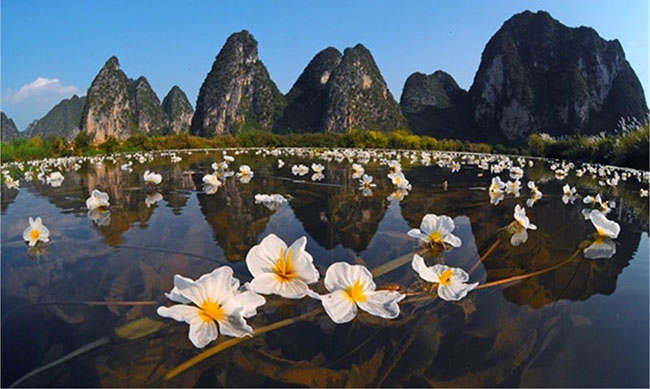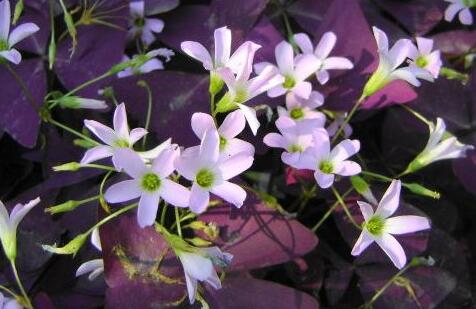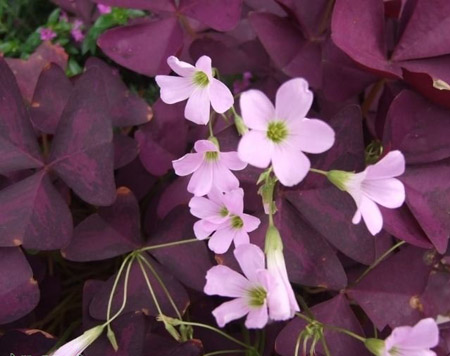Disease symptoms and treatment of Artemisia mandshurica
1. Morphological characteristics
The homotypic snail belongs to the family Bradybaenidae of Stylommatophora, also known as buffalo. Adult shell volute flat spherical, solid and thick, the shell surface is yellowish brown or reddish brown, the shell mouth is horseshoe-shaped. Ovoid, milky white, shiny. The shape of juvenile shellfish is similar to that of adult shellfish. Its mouth is on the ventral side of the head, the mouth has a tongue, and there are many neatly arranged teeth growing on the tongue, which are used to chew and grind food.
two。 Occurrence regularity
The same type of snail occurs for 1-3 generations every year, overwintering with adult and young shellfish in the damp and dark place of the greenhouse. The opening of the shell is sealed with albino. In the north, the overwintering snails of the same type generally begin to feed in early March of the following spring, and gradually turn to overwintering in late September. The spawning period of the same type snail is from May to June and from August to September, which are mostly produced under wet and loose soil crevices, grass roots, withered leaves or stones, but the dry soil or bare eggs can not hatch, and the eggs on the surface are easy to burst under sunlight. The snail of the same type likes warm, dark and humid environment, goes out day and night, feeds in the evening or early morning, and perches on the plant or in the shade all day on cloudy and rainy days.
3. Hazard characteristics
The same type of snail feeds on the leaves and petioles of Oxalis purpurea. Adult shellfish and young shellfish scrape the leaves and petioles of Oxalis purpurea with their tongues, resulting in cavities or missing engravements. in severe cases, they eat up the leaves, bite off the roots of the plants, and cause lack of seedlings, broken ridges, and even seed replanting. Wounds caused by feeding sometimes cause soft rot, resulting in decay and necrosis of leaves, bulbs or roots. The white glowing colloid and black-green insect dung left where the same type snail crawled affected the photosynthesis of Oxalis purpurea.
4. Prevention and cure measures
① agricultural prevention and control:
Clean the countryside, plough and loosen the soil after rain, remove weeds, stones and plant remains and other debris in the field, and destroy the habitat and spawning sites of the same snail. Turning deep into the soil in autumn, some overwintering shellfish and young shellfish were mechanically injured, and the surface was pecked or frozen to death by natural enemies, and the eggs were burst by the sun. The control of soil moisture plays a key role in the control of snails of the same type. There are more Rain Water in the first half of the year, especially in the areas with high groundwater level, ditches should be opened in time to remove stagnant water and reduce soil moisture. Although manual capture is time-consuming, it is very effective. It persists in catching snails of the same type on the soil surface and leaves before sunrise or on cloudy days. Snails of the same type must be killed and cannot be abandoned to prevent their eggs from hatching after the mother's death.
Chemical control of ②:
When the same type snail sneaks into the soil in the early morning (cloudy days can be in the morning), it is sprayed with 800 times of copper sulfate or 1% salt water. Spray control with 800-1000 times liquid of Mianhuoling or 70-400 times liquid of ammonia. It is suggested that the above drugs should be used alternately to ensure cochlear killing and leaf protection and to delay the drug resistance of the same type of snail to the drug. There is also a certain effect of spreading poisonous soil in the evening with polyacetaldehyde, potato distemper tin, Mida and other agents. It can also be sprinkled with tea seed cake powder and 8% Mihuanling granules on the rhizosphere soil, which can also have the effect of controlling the same type of snail. Spraying trichlorfon, deltamethrin and lime powder around the flowerpot can effectively kill or drive away the same type of snail.
Control methods of Snail of the same Type of Flower Pest
Also known as fly snail, buffalo. It is distributed in Hebei, Shandong, Inner Mongolia, Gansu, Shaanxi, Hunan, Hubei, Jiangsu, Zhejiang, Beijing, Tianjin, Jiangxi, Sichuan, Taiwan and other places. Harm to a variety of flowers, such as chrysanthemum, orchid, cockscomb, red, mulberry, canna, eight immortals, dahlia, wax plum, kumquat, citrus, bergamot, rose, honeysuckle, bauhinia, peony, begonia and so on.
Hazard characteristics
The newly hatched young shellfish only feed on the mesophyll, leaving the epidermis, and then scraping the leaves and stems with the tongue to cause holes or lacerations, and in serious cases, bite off the seedlings, resulting in lack of seedlings. The foot gland of the snail axe can secrete mucus, and there are banded, silver-gray shining marks on the leaves, stems and stems that crawl over.
Morphological characteristics
The body length is about 2cm, and the 2.5cm is about when crawling. The head and the back of the front part of the body are grayish yellow, and the back part of the body is grayish white. There are dense slightly raised gray-white plaques on the body surface. The head is well developed, there are 2 pairs of antennae on the head, the first pair of long 1mm or so, the color is the same as the body color or grayish black, the second pair of long 4mm, grayish black. Eyes born at the top of the posterior antennae, black. The antennae can stretch and the eyes can shrink into the body. The mouth is located on the ventral side of the head and has touching lips. Feet on the ventral side of the body, wide, suitable for crawling. There is a spiral shell in vitro, which is oblate and spherical, with a height of 12mm and a wide 16mm, with 5-6 layers of snails. The shell is hard, yellowish brown or reddish brown. The spiral part is low, the body snail layer is wide, and there is a brown band in the middle of the periphery. The shell mouth is horseshoe-shaped or oval-shaped, and the umbilical hole is round. Usually the body is hidden in the spiral shell, when moving and crawling, drill out of the screw hole and bend the shell back on the back of the body.
Prevention and cure method
(1) eradicate weeds in the protected area and its vicinity.
(2) in the place where snails are often active in the evening, sprinkle stone, lime powder or tea powder to kill shellfish and young shellfish.
(3) capturing adult and young shellfish artificially, or making trapping piles with weeds, leaves, vegetable leaves, etc., to lure snails to lurk in them, and then kill them.
(4) the ammonia can be diluted 70 times and 100 times with water and sprayed at night, which can kill snails and fertilize.
(5) insecticide poisoning. Can choose 1000 times liquid of 90% trichlorfon, 1200 times solution of 20% chrysanthemum EC, sprinkle 6% Mida (tetrameric acetaldehyde) granules, use 7~10kg/ square kilometers and mix sand 150 kg, 20% snail enemy (tetrameric acetaldehyde) 1 ∶ ground bean cake or corn meal 20, mix it into poison bait, and spray 20% snail enemy liquid in the evening, spray 20% snail enemy liquid agent, etc., every 15 days, spray twice.
Jingxihai cauliflower Jingxihai cauliflower
Jingxihai cauliflower is a submerged herb. Rhizome short, ca. 2 cm long, ca. 5 mm in diameter. Fruit trigonous, verrucous, longer than spawn. Seeds numerous, long elliptic, with extremely sparse hairs. The florescence is from June to October. 2n=22 .
This variety and the original variety O. acuminate (Gagnep.) Dandy var. Accuminata is similar, the main difference is that there are a large number of male flowers in the male bud, the staminodes in the male flowers are 2-lobed, the staminodes have 6 grooves, and the female spawn contains 8-9 female flowers.

Morphological characteristics of cauliflower in Jingxi Sea
Leaf characteristics
Leaves basal, homomorphic; leaf blade long-elliptic or banded-elliptic, apex acuminate or obtuse, base attenuate or shallowly cordate, entire, slightly undulate, 24-50 cm long and 8-14 cm wide; veins 9, raised and smooth on abaxial surface of leaves; petiole 30-60 cm long, 5-8 mm wide, flattened-trigonous, base sheathing, white, ca. 2.5 cm wide.
Inflorescence characteristics
Flowers unisexual, dioecious; Flame bract flat-elliptic, smooth, 3-6 cm long, 1.2-2.6 cm wide, keel-shaped in the middle, 3-ribbed on it, obvious on both sides, apex 2-toothed; Flame bract flat, cylindrical, 10-90 cm long, about 5 mm wide, curved or spirally twisted Male Buddha bud contains 60-190 male flowers or more, pedicel trigonous to orbicular, 8-9 cm long, 1.8 cm in diameter, flowering outside the flame bract; sepals 3, broadly lanceolate, 1.8-2 cm long, 0.5-0.7 cm wide, rolled outward, green; petals 3. Obovate, apex retuse, longitudinally striated, white, base yellow, about 2.5 cm long and 3.5-4 cm wide Stamens 12, 2 whorls, inner whorls longer than outer whorls, filaments flattened, yellowish, densely tomentose; staminodes 3, linear, flattened, green, 8-12 mm long, apex 2-lobed, lobes 1-3 mm long; pistillode globose, yellowish, with 6 grooves; female spawn contains 8-9 female flowers, peduncle spirally twisted; sepals and petals similar to male flowers, slightly smaller Staminodes 3, ca. 5 mm long; ovary trigonous, lavender, 5.5-8 cm long, 0.3-0.7 cm wide, 1-loculed, parietal placenta
Growing environment of cauliflower in Jingxi Sea
Jingxi seaweed flowers are produced in Guangxi (Jingxi). Born in a running river bay or gully
Main value of cauliflower in Jingxi Sea
Jingxi Sea cauliflower has many functions, mainly in the aspects of water quality purification, ornamental, scientific research and production. Only clear, transparent and clean waters can survive. It is known as the "touchstone" of purifying water quality. It can form a large and stable submerged plant community, indicating that the water quality here is good, of course. It can also be said that Jingxihai cauliflower plays an important role in purifying water quality. It has a large number of male flowers and a long flowering period, which makes it more ornamental, and can be developed into a feature of local tourism in Jingxi. It will certainly attract more tourists to Jingxi for researchers.
Jingxi sea cauliflower has high research value, it has evolved from bisexual flower to unisexual flower, the number of stamens and styles has decreased, and the shape of its population is changeable and changeable. it is of great scientific value for the study of the co-evolution of environmental factors and organisms and the change of its species and genera. Tested by Yunnan Institute of Nutrition and Food, seaweed is rich in a variety of trace elements, vitamins and carbohydrates. It is a kind of low-calorie, fat-free wild green food whose tender leaves and scape are edible. Yunnan local residents like this cooking material very much, but the local residents and the government have such a high value to Jingxi sea cauliflower, but they are unaware that Jingxi sea cauliflower is suffering from all kinds of damage-sand extraction, excessive salvage and feeding fish, raking snail, etc., resulting in sporadic distribution of Jingxi sea cauliflower in some areas, without large area growth. These man-made influences determine the fate of cauliflower in Jingxi Sea. It has been listed as one of the increasingly endangered species in China, which is of great significance to its protection.
- Prev

Disease symptoms and treatment of mole cricket in North China of Oxalis purpurea
1. Morphological characteristics of mole cricket in North China belongs to Orthoptera (Gryllotalpidea), also known as Orthoptera. The adult is 36-55mm long and yellowish brown. The wing is short, the forefoot is flat and strong, and there is a thorn on the inner edge of the tibial segment of the hindfoot.
- Next

Disease symptoms and treatment of wild slug in Oxalis purpurea
1. Morphological characteristics of wild slugs belong to the family Limacidae of Stylommatophora, also known as slugs. Adult fusiform, 20-25mm long and 4-6mm wide; smooth body surface, no shell, dark gray, yellowish white or grayish red
Related
- Fuxing push coffee new agricultural production and marketing class: lack of small-scale processing plants
- Jujube rice field leisure farm deep ploughing Yilan for five years to create a space for organic food and play
- Nongyu Farm-A trial of organic papaya for brave women with advanced technology
- Four points for attention in the prevention and control of diseases and insect pests of edible fungi
- How to add nutrient solution to Edible Fungi
- Is there any good way to control edible fungus mites?
- Open Inoculation Technology of Edible Fungi
- Is there any clever way to use fertilizer for edible fungus in winter?
- What agents are used to kill the pathogens of edible fungi in the mushroom shed?
- Rapid drying of Edible Fungi

